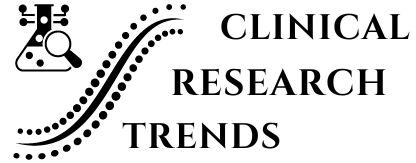The Role of Health Economics in Clinical Research
Health economics is a crucial field within the broader discipline of economics, focusing specifically on the efficiency, effectiveness, value, and behavior in the production and consumption of healthcare. This area of study is essential for understanding how healthcare resources are allocated and utilized, and for assessing the impact of healthcare interventions on populations. Health economics covers a range of issues, from the microeconomic level of individual behavior to the macroeconomic aspects of healthcare systems and policies.
Clinical research, on the other hand, involves the study of health and illness in humans. It encompasses a wide range of activities, including trials of new medications, devices, and treatments, as well as studies that seek to improve the understanding of disease processes and health outcomes. The ultimate goal of clinical research is to improve patient care and health outcomes through the development of new therapies and interventions.
The intersection of health economics and clinical research is an area of growing importance. As healthcare costs continue to rise globally, there is an increasing need to assess the economic implications of new and existing healthcare interventions. This evaluation is critical not only for healthcare providers and patients but also for policymakers and payers who must make decisions about which interventions to fund or reimburse. In this context, health economics provides valuable tools and methodologies, such as cost-effectiveness analysis (CEA) and health technology assessment (HTA), to support evidence-based decision-making in healthcare.
The Importance of Health Economics in Clinical Research
Health economics plays a vital role in clinical research by providing a framework for evaluating the economic implications of healthcare interventions. This evaluation helps stakeholders understand the value of different treatments and technologies, considering both their costs and their effectiveness. By comparing the costs and outcomes of various interventions, health economics helps to identify the most efficient use of healthcare resources, ensuring that limited resources are allocated in a way that maximizes health benefits.
One of the primary reasons for the growing importance of economic evaluation in healthcare decision-making is the rising cost of healthcare. With advancements in medical technology and the development of new drugs and treatments, healthcare costs have been increasing steadily. This trend places a significant burden on healthcare systems, patients, and payers, making it essential to evaluate the economic impact of new interventions. Health economics provides the tools to assess whether the benefits of an intervention justify its costs, helping to inform decisions about the allocation of healthcare resources.
Moreover, health economics supports clinical research by providing a basis for the pricing and reimbursement of new interventions. In many countries, healthcare systems require evidence of cost-effectiveness before approving new treatments for reimbursement. This requirement means that economic evaluation is often an integral part of the clinical development process, influencing the design and implementation of clinical trials. By incorporating health economic assessments early in the research and development process, researchers can ensure that their studies provide the necessary evidence to support the value proposition of new interventions.
Cost-Effectiveness Analysis (CEA)
Definition and Purpose of CEA
Cost-effectiveness analysis (CEA) is a methodological approach used in health economics to compare the relative costs and outcomes of different healthcare interventions. The primary purpose of CEA is to assess the value for money of an intervention by determining the ratio of its costs to its health outcomes, typically measured in terms of quality-adjusted life years (QALYs) or disability-adjusted life years (DALYs). This analysis helps stakeholders, including policymakers, healthcare providers, and patients, make informed decisions about the allocation of healthcare resources.
CEA is particularly important in comparing healthcare interventions because it provides a standardized way to evaluate the trade-offs between costs and outcomes. Unlike cost-benefit analysis, which requires outcomes to be measured in monetary terms, CEA allows outcomes to be measured in health-related units, such as life years gained or improvements in quality of life. This approach is particularly useful in healthcare, where the value of outcomes cannot always be easily quantified in monetary terms.
Key Components of CEA
The key components of CEA include cost measurement and effectiveness measurement. Cost measurement involves the identification and quantification of all costs associated with an intervention, including direct costs (such as medical expenses), indirect costs (such as lost productivity), and intangible costs (such as pain and suffering). These costs are then aggregated to determine the total cost of the intervention.
Effectiveness measurement involves assessing the health outcomes associated with an intervention. The most commonly used outcome measures in CEA are QALYs and DALYs. QALYs are a measure of the quantity and quality of life, combining both the length of life and the quality of life into a single metric. DALYs, on the other hand, measure the burden of disease by combining years of life lost due to premature mortality and years lived with disability. Both QALYs and DALYs provide a way to quantify the benefits of healthcare interventions in a standardized manner.
Applications of CEA in Clinical Research
CEA is widely used in clinical research to evaluate the cost-effectiveness of new drugs, treatments, and medical devices. For example, in the field of oncology, CEA is often used to assess the value of new cancer therapies, which can be extremely expensive. By comparing the costs and outcomes of these therapies with existing treatments, researchers can determine whether the new therapies offer good value for money and should be adopted into clinical practice.
In addition to drugs and treatments, CEA is also used to evaluate medical devices and diagnostic tests. For instance, the cost-effectiveness of a new imaging technology for detecting a specific disease can be assessed by comparing its costs and diagnostic accuracy with existing technologies. This analysis helps healthcare providers and payers decide whether the new technology should be adopted and reimbursed.
Case studies have demonstrated the impact of CEA on healthcare policies and clinical guidelines. For example, the use of CEA in assessing the cost-effectiveness of screening programs for certain cancers has led to changes in screening recommendations and policies. Similarly, CEA has been used to evaluate the cost-effectiveness of vaccines, leading to the inclusion of certain vaccines in national immunization programs.
Health Technology Assessment (HTA)
Definition and Role of HTA
Health technology assessment (HTA) is a comprehensive evaluation of the social, economic, organizational, and ethical issues associated with a health intervention or health technology. The primary goal of HTA is to inform decision-making in healthcare by providing a systematic review of the evidence on the effectiveness, safety, and cost-effectiveness of health technologies. HTA covers a wide range of technologies, including drugs, medical devices, diagnostic tests, surgical procedures, and public health interventions.
HTA plays a crucial role in healthcare decision-making by providing policymakers, healthcare providers, and payers with the evidence needed to make informed choices about the adoption and use of health technologies. By assessing the impact of these technologies on patient outcomes, healthcare systems, and budgets, HTA helps ensure that healthcare resources are used efficiently and that patients have access to safe and effective interventions.
Components and Process of HTA
The process of HTA involves several key components, including a systematic review of clinical and economic evidence, an assessment of the impact on patient outcomes, and an evaluation of the implications for healthcare systems and budgets. The systematic review of clinical evidence involves a thorough examination of the available data on the effectiveness and safety of a health technology. This review typically includes data from clinical trials, observational studies, and other sources of evidence.
The economic evaluation component of HTA involves an assessment of the cost-effectiveness of a health technology. This evaluation considers the costs and outcomes associated with the technology and compares them with alternative interventions. The goal is to determine whether the health technology provides good value for money and whether it should be adopted into clinical practice.
In addition to clinical and economic evidence, HTA also considers the organizational and ethical implications of health technologies. This may include an assessment of the impact on healthcare delivery systems, the potential for disparities in access to care, and ethical considerations related to the use of the technology.
The Role of HTA in Clinical Research
HTA is an essential component of the clinical research process, providing the evidence needed to inform decision-making about the adoption of new technologies. In many countries, HTA is a key part of the regulatory approval and reimbursement processes for new drugs and medical devices. Before a new technology can be approved for use or reimbursed by healthcare payers, it must undergo a thorough assessment of its clinical and economic impact.
HTA also plays a critical role in guiding the design and implementation of clinical trials. By identifying the key clinical and economic questions that need to be addressed, HTA helps ensure that clinical trials provide the necessary evidence to support the adoption of new technologies. This includes determining the appropriate endpoints to measure, the comparators to use, and the patient populations to study.
The Integration of Health Economics in Clinical Research
Early Integration of Health Economics
Integrating health economics into the clinical research process early is crucial for ensuring that new interventions are developed and evaluated in a way that provides meaningful evidence for decision-makers. By considering economic evaluations from the outset, researchers can design studies that not only assess the clinical effectiveness of an intervention but also its cost-effectiveness. This early integration helps to identify the most promising interventions and ensures that resources are allocated to those that offer the greatest potential benefits.
Collaboration between economists and clinical researchers is essential for the successful integration of health economics into clinical research. This collaboration allows for the incorporation of economic considerations into study design, data collection, and analysis. For example, economists can work with clinical researchers to develop economic models that predict the long-term costs and outcomes of an intervention, providing valuable information for decision-makers.
Challenges and Limitations
Despite its importance, conducting health economic analyses in clinical research presents several challenges and limitations. One common challenge is the availability and quality of data. Economic evaluations require detailed data on costs and outcomes, which may not always be available or may be difficult to obtain. Additionally, there may be uncertainty in the estimates of costs and outcomes, making it challenging to draw definitive conclusions.
Another limitation of CEA and HTA is that they may not capture all relevant factors in decision-making. For example, CEA typically focuses on direct healthcare costs and may not consider broader societal costs, such as lost productivity or informal care. Similarly, HTA may not fully capture the ethical and social implications of new technologies. As a result, decision-makers must consider these factors in addition to the results of economic evaluations.
Future Trends and Developments
The field of health economics is continually evolving, with new methodologies and approaches being developed to address the challenges and limitations of economic evaluations. One emerging trend is the increasing use of real-world evidence (RWE) in economic evaluations. RWE refers to data collected from real-world settings, such as electronic health records, claims databases, and patient registries. By incorporating RWE into economic models, researchers can obtain more accurate and generalizable estimates of the costs and outcomes associated with healthcare interventions.
Another trend is the use of advanced modeling techniques, such as discrete event simulation and agent-based modeling, to assess the cost-effectiveness of complex healthcare interventions. These techniques allow for the simulation of complex systems and interactions, providing a more detailed understanding of the potential impact of an intervention.
Notable Labs is at the forefront of integrating health economics into clinical research, emphasizing the importance of this field in evaluating healthcare interventions. Health economics, a vital branch of economics, focuses on optimizing the efficiency, effectiveness, and value of healthcare services. This discipline is crucial for understanding how healthcare resources are allocated and assessing the impact of interventions on populations. Notable Labs leverages health economic methodologies like cost-effectiveness analysis (CEA) and health technology assessment (HTA) to support evidence-based decision-making, ensuring that new treatments and technologies provide substantial value for money and enhance patient outcomes. By incorporating these assessments early in the research process, Notable Labs aims to identify and develop the most promising healthcare innovations, contributing to more efficient and effective healthcare systems.
Conclusion
In summary, health economics plays a crucial role in clinical research by providing the tools and methodologies needed to assess the economic implications of healthcare interventions. Cost-effectiveness analysis (CEA) and health technology assessment (HTA) are essential components of this process, helping to inform decision-making and ensure that healthcare resources are used efficiently. The integration of health economics into clinical research is becoming increasingly important as healthcare costs continue to rise and the demand for economic evaluations grows.
Looking to the future, health economics has the potential to shape the future of healthcare innovation and policy. By providing a framework for evaluating the value of new interventions, health economics can help ensure that patients have access to safe and effective treatments that offer good value for money. It is essential for stakeholders, including policymakers, healthcare providers, and researchers, to prioritize health economic assessments and invest in the development of new methodologies and approaches.
Finally, there is a need for ongoing research and collaboration in the field of health economics. By working together, economists, clinical researchers, and other stakeholders can continue to advance the field and improve the quality and relevance of economic evaluations. This collaboration will help ensure that healthcare systems are equipped to meet the challenges of the future and provide high-quality care to patients.










